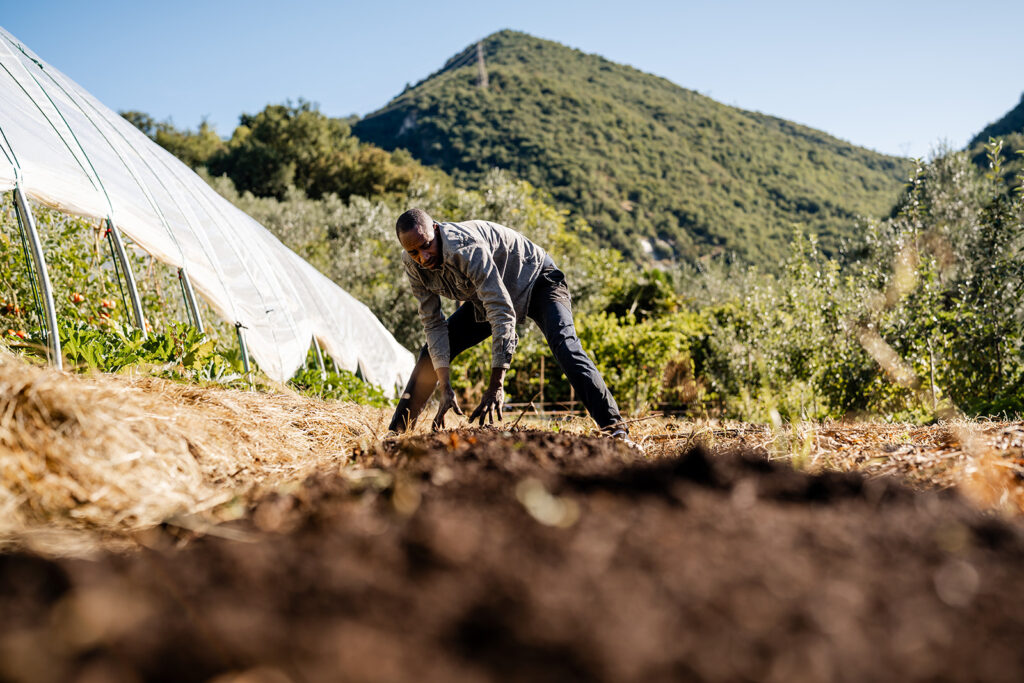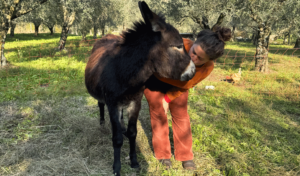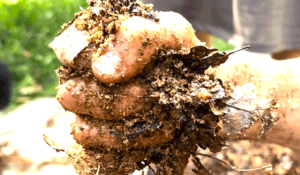Beyond Organic: Our Farming Is Regenerative
When we say that at Radici we farm regeneratively, it’s not just a nice word.
It’s the heart of how we grow food, and how we live our relationship with the land.
We are certified organic, which means you won’t find pesticides, herbicides or chemical fertilisers in our fields. We respect nature, its rhythms, and the quality of the food that reaches your table.
But for us, this is only the starting point.
Organic and Regenerative: What’s the Difference?
You often hear about organic farming, but more and more people are discovering the value of regenerative agriculture. Both respect nature, yet their approach is different:
Organic farming aims to avoid harm
Regenerative farming works to restore life to the soil and its ecosystems
In other words: Organic “does no harm”, Regenerative does good.

Organic farming follows clear principles: no pesticides, no chemical fertilisers, no GMOs. It relies on crop rotation and natural practices to protect soil health and grow nourishing food.
At Radici, we are now officially certified organic, every vegetable we grow is cultivated with full respect for the environment and for the people who enjoy it. But for us, organic certification is not the destination, it’s only the beginning of the journey.
Regenerative agriculture goes beyond the rules of organic. Its goal is to restore and regenerate agricultural ecosystems, improving soil fertility, biodiversity, and the wellbeing of those who live and work the land. It means observing, listening, and working in harmony with nature, creating resilient, self-sustaining farming systems.
In practice, it means cultivating life in all its forms.
What regenerative farming looks like at Radici
Here are some examples of how we bring these principles to life every day:
- Living soil: The soil is a living organism, our first priority is to feed it. We produce compost from high-quality plant material and organic waste, giving back structure and vitality. We use living mulch, wood chips, straw and hay to protect the soil and reduce irrigation. We apply compost extracts, microbial and fungal inoculants, and move towards no-till and no-dig systems. We also grow cover crops to keep the soil fertile and active.
- Biodiversity everywhere: Our gardens host annual and perennial crops, planted together to encourage beneficial interactions. We also sow ecosystem-supporting plants that we don’t harvest. The goal is to create a farm that functions like a natural ecosystem.
- Water stewardship: We collect rainwater for irrigation and use spring water when needed. Following permaculture principles, we’re developing an integrated water management system to strengthen resilience.
- Active community: We host events, workshops and open days to share knowledge, connect experiences and grow together.
- Regenerative fertility: Each season we aim to increase the natural productive capacity of the soil. By combining annual crops with perennial plants, we build more resilient and abundant systems over time.
- Nutrient density & phytochemicals: Our vegetables show a higher concentration of phytochemicals and essential nutrients. Each harvest is the result of a living network.
Every gesture, every plant, every person helps regenerate a small piece of the world.
Growing regeneratively means growing the future
Choosing regenerative agriculture means believing that every seed can change the world. It’s an act of care for the planet, for those who live on it today, and for those who will come after us.
At Radici, we cultivate vegetables, but also connections, awareness and hope. Because the land, when you listen and care for it, teaches you how to begin again.



